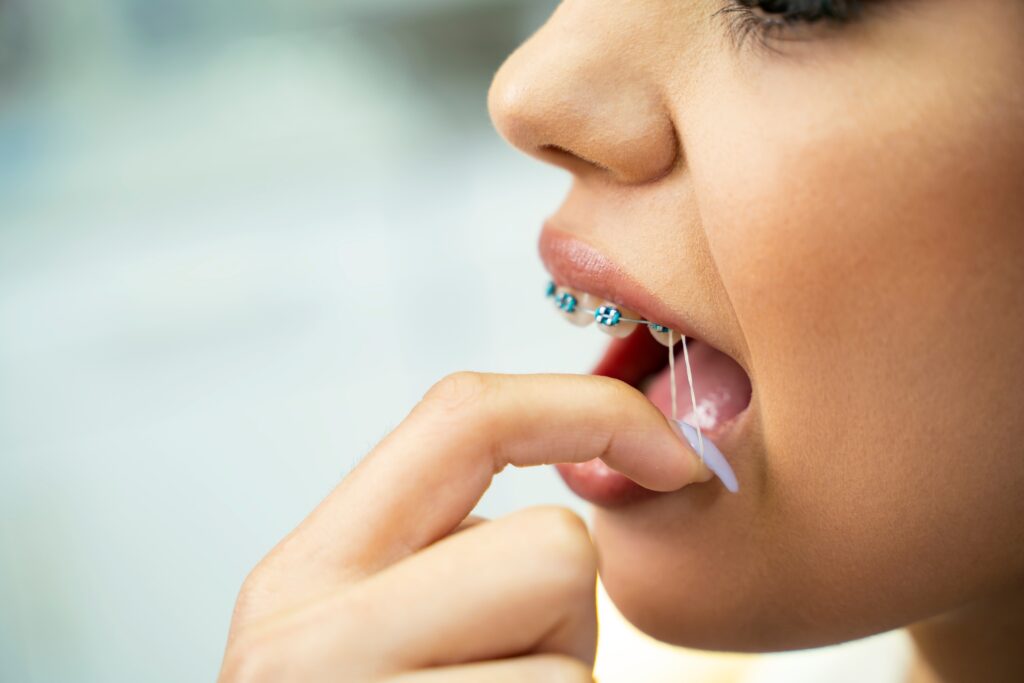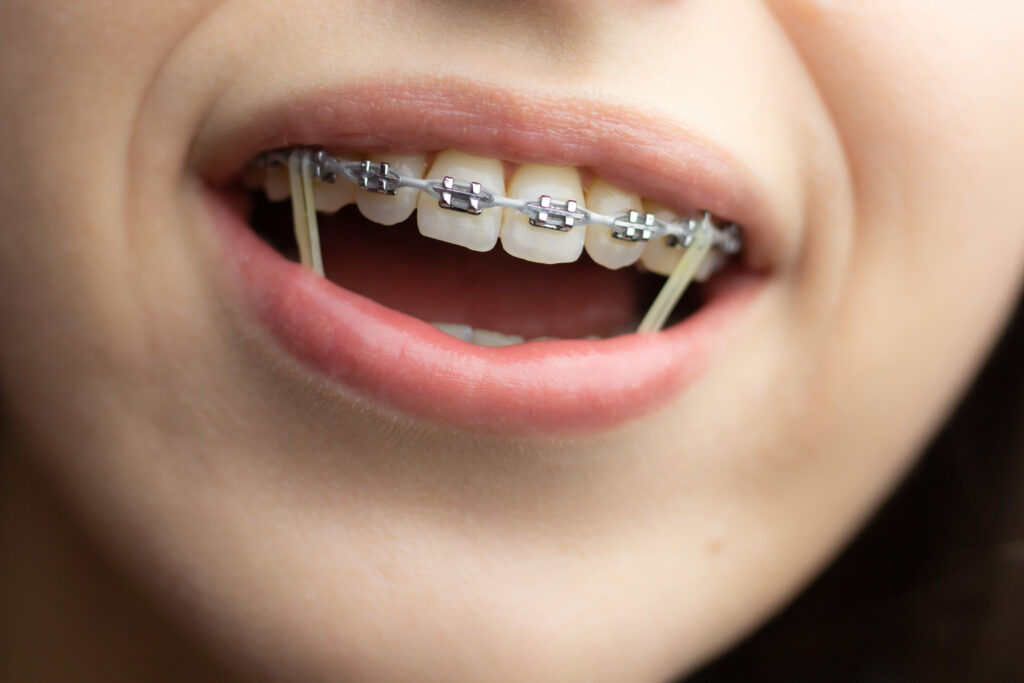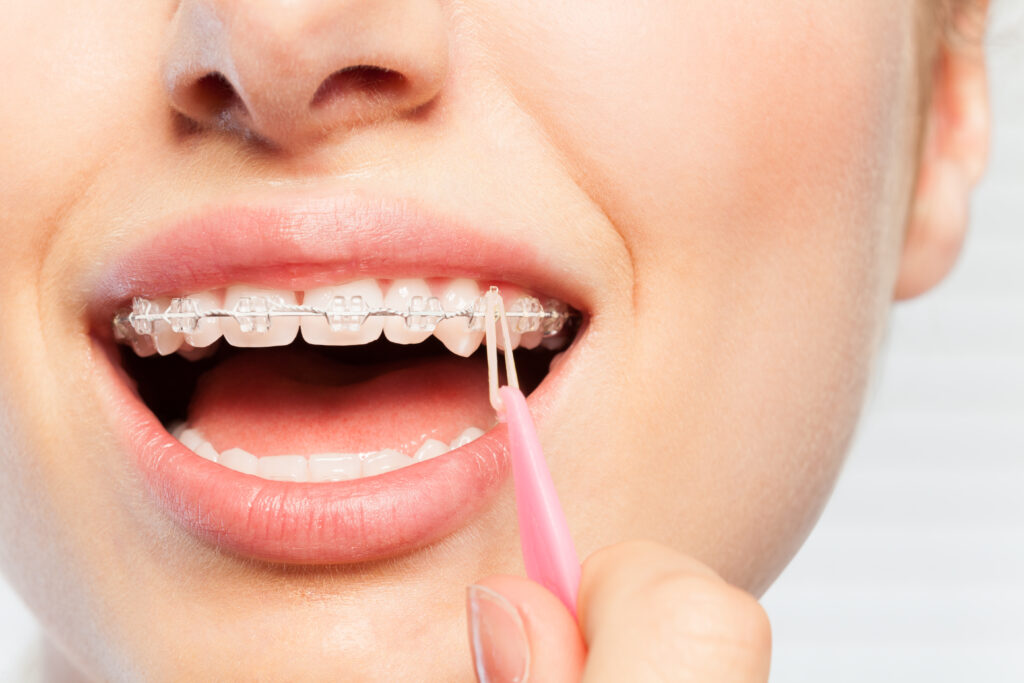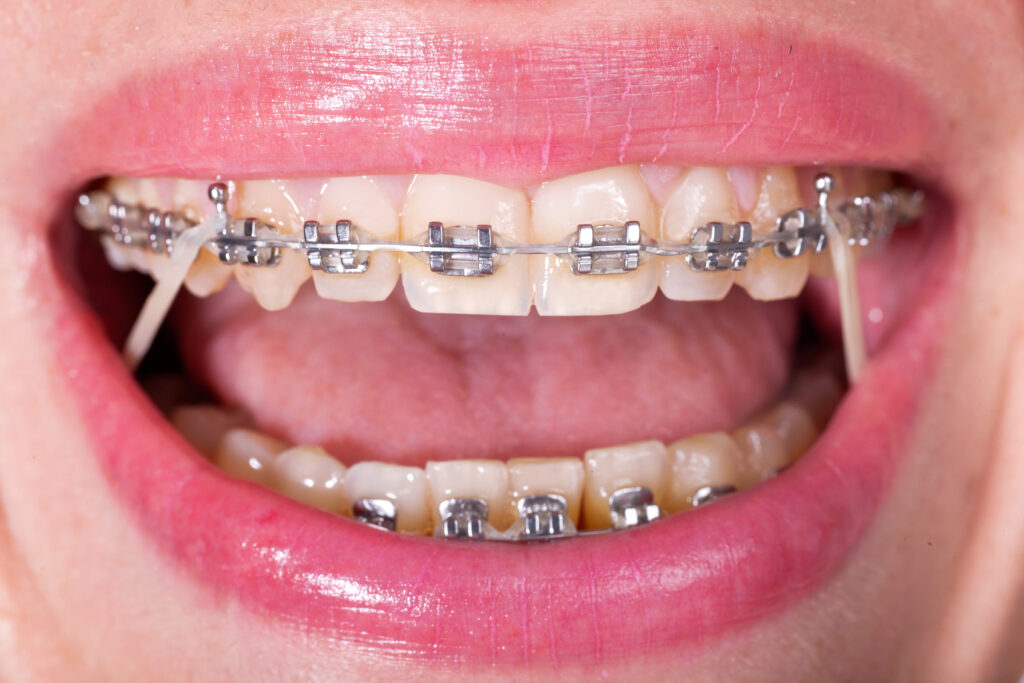Navigating the world of braces can be challenging, especially when it comes to understanding the purpose and use of rubber bands.
One of the most common questions individuals with braces often ask is whether or not they can eat with rubber bands still attached to their braces.
The short answer to this question is yes, you can eat with rubber bands on your braces.
However, there are certain considerations and guidelines to follow for a comfortable and successful orthodontic treatment journey.
While rubber bands are designed to be worn almost all the time to properly align teeth and jaws, the experience of eating with them may vary depending on the individual.
Some people manage to consume food without any discomfort, as the chewing motion can be beneficial in applying additional force to the teeth via the elastics.
However, for others, eating might be more difficult due to the presence of rubber bands. In such instances, it would be crucial to consult with an orthodontist to seek personalized advice and recommendations.
It’s important to note that eating certain types of food might pose a risk to the braces and rubber bands, for instance, consuming meat right from the bone. In these cases, it is advisable to cut food into bite-sized pieces and avoid hard or sticky edibles that could potentially damage the braces.
Keeping these essential factors in mind can help ensure a smooth experience while eating with rubber bands on braces, ultimately contributing to successful orthodontic treatment outcomes.

Understanding Braces and Rubber Bands
Purpose of Rubber Bands
Braces are an orthodontic treatment used to correct various dental issues such as misaligned teeth, overbites, and underbites. A key component of many braces systems are rubber bands, also known as elastics. These rubber bands apply additional force to specific areas of the mouth and help to move teeth into their desired position.
A common use for rubber bands is to correct a misaligned jaw. They are placed in specific configurations, connecting the top and bottom braces to exert pressure and improve the alignment of the jaw. Chewing with rubber bands on can be beneficial, as it applies even more pressure to the teeth via the elastics.
Different Types of Rubber Bands
There are various types of rubber bands used in orthodontic treatments, with the appropriate type prescribed by the orthodontist based on the patient’s needs. Some common types of rubber bands include:
- Interarch Elastics: These elastics are used to connect the top and bottom braces, applying pressure to correct the alignment of the jaw. They can be placed in different configurations depending on the desired movement of the teeth and jaw.
- Chain Elastics: Also known as power chains, these are a series of connected rubber bands that surround multiple teeth, creating pressure to close gaps or maintain the desired spacing between teeth.
Rubber bands should be worn as prescribed by the orthodontist, usually for at least 20 to 22 hours per day, including while eating and sleeping. If a patient finds it difficult to eat with rubber bands on, they can remove them during meals and replace them afterward. It’s important to remember that wearing rubber bands consistently helps achieve optimal results in a shorter amount of time.

Eating With Rubber Bands on Your Braces
When wearing rubber bands on your braces, it’s important to know what you can and cannot eat. In this section, we will discuss the foods you should avoid and the safe foods you can consume while wearing rubber bands on your braces.
Foods to Avoid
It’s crucial to avoid certain foods that can damage your braces, get stuck in your hardware, or interfere with the effectiveness of the rubber bands. Foods to completely avoid with braces include:
- Popcorn
- Nuts
- Ice
- Chewing gum
- Hard candy
- Chewy candy
- Pizza crust
- Bagels and other hard rolls
- Crunchy vegetables and fruits
- Hard crackers
- Pretzels
Be cautious when eating raw vegetables such as carrots, cauliflower, and broccoli, as they can be tough to bite into and may even pop a bracket off your tooth.
Safe Foods to Eat
While wearing rubber bands on your braces, you can still enjoy a variety of foods. The key is to choose softer items that won’t damage your braces or interfere with the rubber bands. Some safe foods to eat include:
- Soft fruits: such as bananas, oranges, and grapes
- Cooked vegetables: steamed or boiled to make them easier to chew
- Soft grains: rice, pasta, and cooked cereals
- Dairy products: yogurt, cheese, and milk
- Soft proteins: eggs, beans, and tender meats
You can eat small items while wearing your elastic bands. If you find it difficult to eat, you can gently remove the rubber bands, eat, and then put them back on after you are done. Remember, it is essential to maintain a balanced diet and be cautious while eating to ensure the effectiveness of your orthodontic treatment.

How to Manage Rubber Bands While Eating
Removing and Replacing Rubber Bands
When eating, it may be necessary to remove the rubber bands on your braces, especially if you’re consuming larger portions of food. Before starting your meal, carefully remove the rubber bands and store them in a safe place. After finishing your meal, ensure your teeth and braces are clean before putting the rubber bands back on. If a rubber band breaks or snaps, replace it immediately. In case you run out, contact your orthodontist to refill your supply. Thankfully, swallowing a rubber band by accident is relatively harmless as they’re made to be safe in such situations.
Cleaning After Meals
Cleaning teeth and braces thoroughly after meals is essential to maintaining oral health while wearing braces. Here are some steps to follow for proper cleaning:
- Rinse your mouth with water to loosen food particles stuck in your braces.
- Use an interdental brush to clean between brackets and wires and remove any food debris.
- Brush your teeth with a soft-bristle toothbrush and fluoride toothpaste in a circular motion, making sure to clean every tooth surface.
- Use a floss threader or water flosser to clean between your teeth and under the wires.
- Rinse your mouth with an alcohol-free mouthwash for added protection against bacteria.
Remember to clean your braces and rubber bands thoroughly after each meal to maintain a healthy oral environment and to prevent any discomfort or damage to your braces.

Tips for Eating With Rubber Bands
Cutting Food into Smaller Pieces
One helpful tip for eating with rubber bands on your braces is to cut food into smaller pieces. This makes it easier to eat without damaging the braces or rubber bands, and it prevents small particles from getting stuck in the brackets. Smaller pieces of food can also help you chew more efficiently, which may relieve some of the stress on your jaw.
- Use a knife and fork to cut food into bite-sized pieces
- Avoid biting into large or hard foods, like apples or whole sandwiches
- Opt for softer foods that won’t put strain on your braces
Chewing Slowly and Carefully
Another important tip for eating with rubber bands on your braces is to chew slowly and carefully. Rushing or chewing too quickly might result in unnecessary pressure on your braces or accidentally damaging the rubber bands. By slowing down and chewing more thoughtfully, you can enjoy your meal without worrying about your braces.
- Take your time while eating and focus on the texture and flavor of your food
- Close your mouth completely before chewing to keep rubber bands in place
- Use your tongue to keep food away from the braces and rubber bands while chewing
- Avoid very sticky or chewy foods, as they can become tangled in your braces and rubber bands
Conclusion
In conclusion, it is generally not recommended to eat with rubber bands on your braces. Though some individuals may be able to eat without any issues, it is better to remove the rubber bands before eating, clean the teeth, and then replace the bands with fresh ones after the meal. This practice can help maintain the hygiene and effectiveness of the braces.
By following this advice, individuals with braces can avoid potential discomfort or damage to both the braces and their teeth. Moreover, it ensures braces wearers maintain good oral hygiene, preventing bacteria buildup that could lead to other dental problems in the long run.
Incorporating proper rubber band care habits into one’s daily routine may seem daunting at first, but with time and practice, it will become second nature. Regular dental visits and clear communication with the orthodontist will also go a long way in ensuring a smooth braces journey and a healthy, beautiful smile upon treatment completion.

